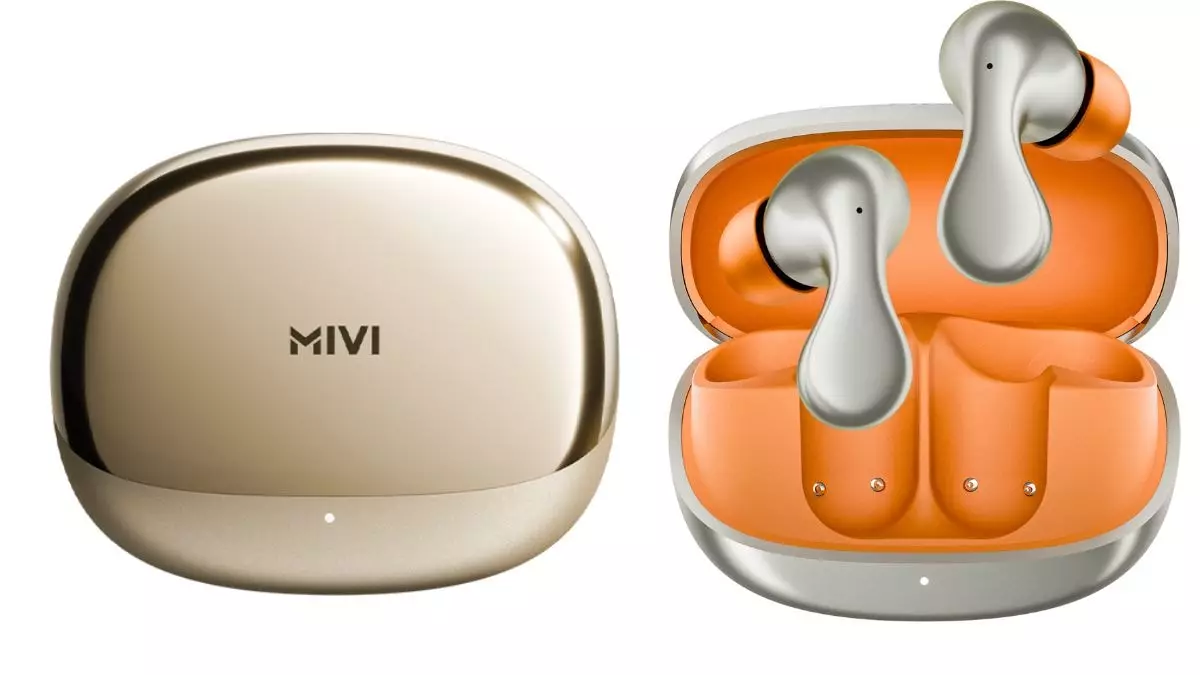When Mivi announced their latest AI-equipped earphones, expectations soared. They branded the Mivi AI Buds as a leap forward in wireless audio technology, promising a seamless blend of sound quality, battery longevity, and intelligent assistant features. While these claims might sound enticing on paper, a closer, more critical look reveals that the actual innovation is nebulous at best. The AI assistant, which should ideally redefine hands-free interaction, is limited to pre-set avatars and domain-specific chatbots, falling into the trap of superficial digitization rather than true smart assistance. This raises questions about whether companies are merely capitalizing on the AI buzzword to inflate perceived value, rather than delivering genuine breakthroughs that enhance user experience meaningfully.
Design and Features: Style Over Substance?
The aesthetic appeal of the Mivi AI Buds cannot be discounted; their unibody metallic construction and glossy finish undoubtedly cater to consumers craving a premium look. However, style often overshadows substance in consumer electronics, and here, the focus on visual design seems to overshadow core functionalities. Promising 40 hours of total playback time and including features like active noise cancellation and spatial audio, the company positions these earbuds as all-in-one entertainment and productivity devices. Yet, without transparent details on the noise cancellation’s efficacy or the implemented spatial audio quality, these claims risk being marketing fluff rather than factual advantages. A sleek exterior does little to mask the fact that many such features are standard elsewhere, often with proven performance, and rely heavily on user trust rather than verification.
The AI Assistant: The Core of the Controversy
The real crux of controversy lies in Mivi’s AI assistant, which is touted as the device’s star feature. While activating it with a wake phrase like “Hi Mivi” sounds innovative, in practice, AI assistants embedded in low-cost TWS earbuds tend to fall short. These assistants are limited to pre-designed avatars such as Chef, Guru, or Wellness Coach, which, although interesting conceptually, are superficial tools at best. They lack the depth and contextual awareness to truly replace human interaction or address complex queries effectively. Moreover, the reliance on a companion app creates a dependency on connectivity and additional hardware, reducing the convenience factor. Instead of empowering users with genuine AI-driven insights or productivity boosts, what’s delivered resembles an elaborate chatbot with domain-specific knowledge, which may excite hobbyists but hardly revolutionizes daily tech interaction.
The Pricing and Market Strategy: A Double-Edged Sword
Pricing a product like the Mivi AI Buds between Rs. 5,999 and Rs. 6,999 places it squarely in the mid-range TWS market segment. But what value does this price point truly offer if the core AI features remain underwhelming? Consumers are increasingly savvy, seeking products that deliver multipurpose reliability and real innovation. Simply adding AI avatars and limited voice controls without proven practical benefits can come across as a marketing tactic to justify premium pricing. Additionally, the strategic decision to transition AI assistant features into a freemium model suggests an underlying focus on monetization over seamless user experience. While the initial offer might seem generous, it raises questions if the technology will eventually become a paid service, leaving early adopters feeling like guinea pigs for a revenue model built on hype rather than tangible advancements.
The Broader Implication: Are We Settling for Less?
In a broader sense, the advent of such supposedly intelligent gadgets underscores a disconcerting trend: the industry is increasingly focused on deploying flashy features to mask stagnation. Consumers deserve more than just aesthetic appeal and superficial AI chatter; they need genuine technological evolution that tangibly improves lives. Unfortunately, the current landscape suggests that many companies prioritize profit margins over meaningful innovation, leveraging buzzwords like “AI” and “spatial sound” without substantiating their claims with solid performance. For center-leaning liberals who advocate for responsible tech development and consumer rights, this trend is troubling. It exemplifies how innovation can be hijacked by corporate greed, leading to a market awash in misdirection and false promises rather than authentic technological progress.
The Mivi AI Buds might appeal to style-conscious buyers lured by buzzwords, but they ultimately serve as a stark reminder that true innovation requires transparency, depth, and a focus on user empowerment — not just clever branding and fleeting trends.


Leave a Reply